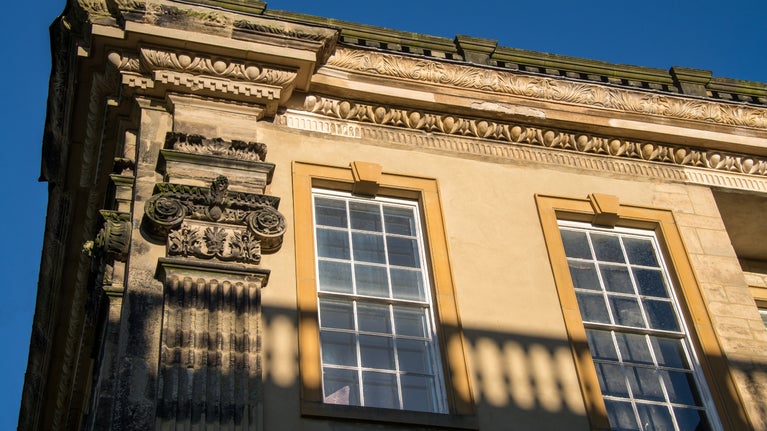Reframing Calke: windows and walls
- Last updated:
- 25 July 2024

From July 2024, Calke Abbey is undertaking a 24-week project to repair and restore the first and second floor windows and walls on the west and south front of the house.
Built on the site of a former priory, Calke Abbey’s exterior has changed several times from an Elizabethan house to the Baroque façade you see today, which dates from 1701 to 1704. Over time, the elements have taken their toll on this historic building, resulting in the need for repair.
This year, we’re undertaking conservation work to ensure the walls and windows of the house remain watertight. Preventing leaks and damp conditions inside the rooms protects Calke’s historic objects and interiors.
The scope of work
A team of ten craftspeople from local heritage and conservation specialists, ASBC, will repair the windows and masonry to make sure the building is watertight by:
- Sanding, painting, and replacing rotten sections of the window frames.
- Repairing cracked panes of precious crown glass and replacing panes with traditional mouth-blown cylinder glass, where cracking is substantial.
- Filling fine cracks on rendered areas of the house and pinning loose or flaking render in place.
- Brushing back crumbling stone, pinning loose stone in place, replacing stone where it’s beyond repair and using lime mortar to ensure water doesn’t collect in any fissures and joints.
- Investigating the historic lead rainwater downpipes and hoppers, repairing, and clearing where necessary.

During this time, scaffolding will be present on the west and south front of the house so that the team can access all 65 windows safely.
To preserve the Baroque exterior, they will use oak timber from the Calke estate and a combination of Hollington Stone from Staffordshire and Swinton Stone from Berwickshire, which are the closest matching stone available today.
Not just a home for humans
The Calke estate is home to 11 of the 12 species of bats found in Derbyshire, with 17 different species living nationally. The abundance of old buildings and trees provides great places for them to roost and nest.
During nocturnal surveys earlier this year, 39 common pipistrelle bats were recorded emerging from a roost located in the mansion stonework.
To ensure the building works don’t harm or disturb this protected species, we’re working with a licensed ecologist and have a Bat Mitigation Class License. Eight bat boxes have also been placed in nearby trees to provide more suitable roosting sites while the work takes place.
Supporting our work
This phase of work is expected to cost £550,000, which is the equivalent of selling around 230,000 National Trust scones in our café. With the remaining sides of the house due to be completed, it’s likely this building project will total around £2.5 million once complete.
You can support us by treating yourself to a scone, picking up a new read in the second-hand bookshop or purchasing one of our limited-edition mansion pin badges from the shop or ticket office. Alternatively, you can donate below.
Every purchase or donation helps to fund vital work like this, to protect Calke Abbey for future generations.
Donate to Calke
Your gift will help to conserve and protect the house at Calke Abbey for future generations to enjoy.
£5 could give the window frames a new lease of life with some fresh paint.
You might also be interested in

History of Calke Abbey
Calke Abbey is the place where time stood still. Discover the history of the 'unstately home' as a religious priory and family home for 12 generations.

Things to do in the house at Calke Abbey
Discover the 'un-stately' home at Calke Abbey, where peeling paint and abandoned rooms vividly portray a period when many country houses didn't survive.

Our work in the house at Calke Abbey
From everyday cleaning to specialist conservation, discover the work we do behind closed doors to preserve Calke Abbey and its collections for generations to come.

Calke Abbey's collection
Discover a collection of contrasts at Calke Abbey, from lavish treasures such as the State Bed to a vast collection of decaying household objects, natural history and more.